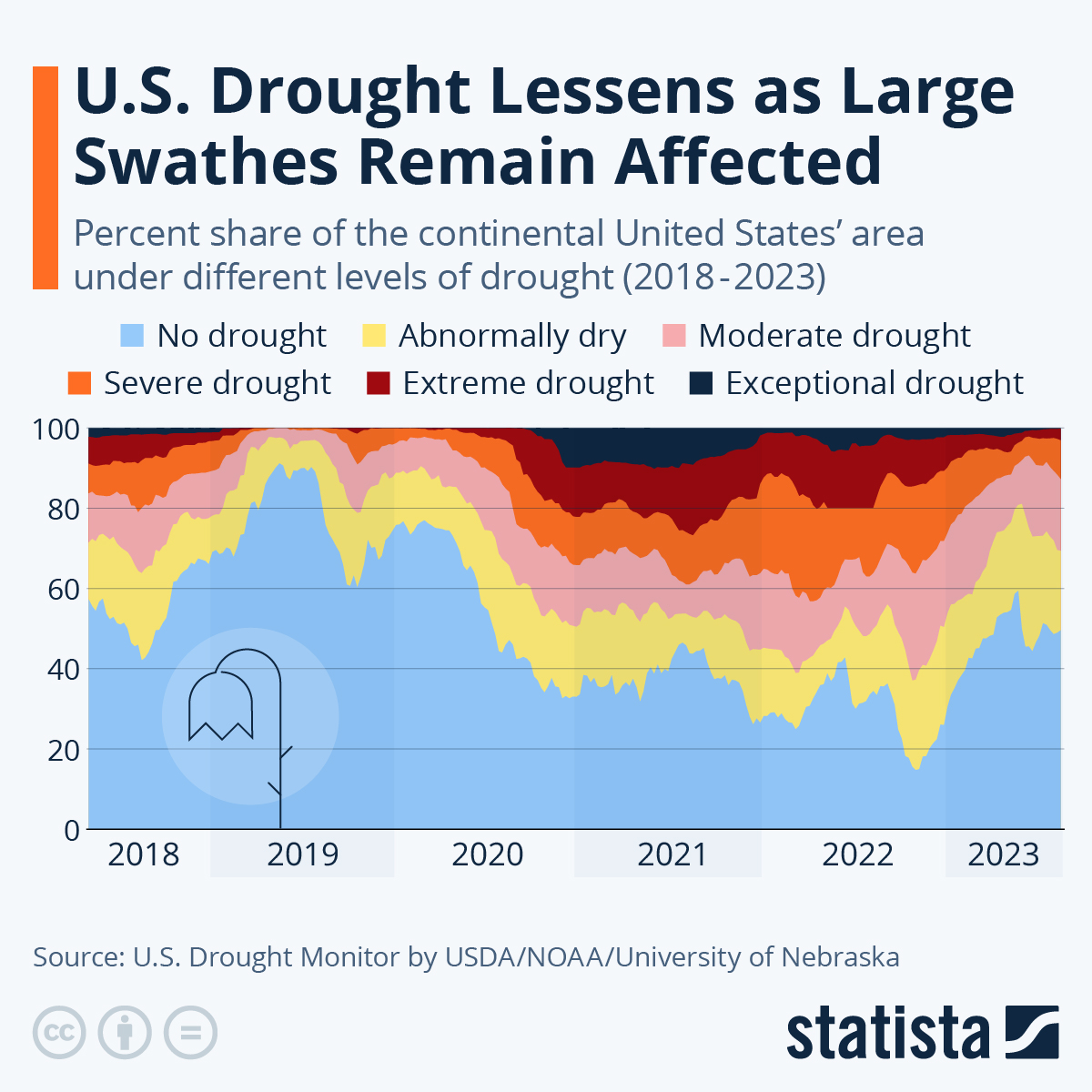Tropical storm Hilary reached California Monday morning, bringing heavy rains to the state and its neighbors. Due to the downpour, California is free of extreme drought conditions for the first time in three years, The New York Times reports. Even before the storm, as of August 15, only 3 percent of the area of the continental United States was classified as being under extreme or exceptional drought, according to the U.S. Drought Monitor. This was down from 20 percent in May of last year. However, drought conditions of any level are still affecting almost exactly half of the lower 48.
Since late 2020, the United States has been experiencing unusually hot and dry weather, with extreme and exceptional drought affecting the American West and Midwest especially. The extreme circumstances spurred demand for water and cooling, leaving reservoirs emptier than usual. With the drought also came a heightened risk of heat-induced medical emergencies and wildfires.
Between October 2020 and early February 2023, droughts of different levels of severity had almost continuously affected more than 60 percent of the area of the continental United States with just two short breaks (16 out of 98 weeks), reaching a high of 85 percent in October 2022. While the number had risen this high before, it rarely stayed there for so long. During the drought of 2018, it exceeded the threshold for only five weeks. Between April 2012 and May 2013, droughts had affected more than 60 percent of the United States’ area for 60 weeks in a row and expanded to around 80 percent momentarily.
While fluctuating temperatures and very hot, very dry or very cold days are a normal phenomenon, these extreme weather events are expected to become more frequent and severe due to climate change. Scientist have connected the reoccuring drought in the Western U.S. to a changing climate, for example citing heatwaves that start earlier in the year and have become longer as well as stronger.





















